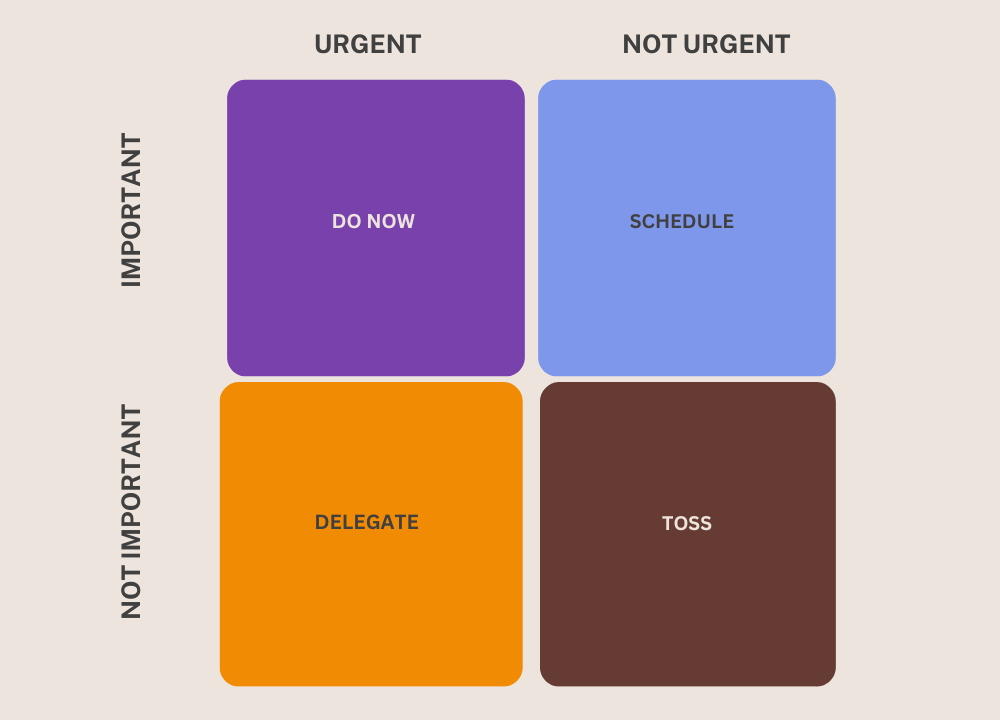In today’s fast-paced world, the ability to effectively prioritize tasks can mean the difference between thriving and merely surviving.
Beyond that, we can dramatically cut down our work hours by focusing our efforts on those high priority tasks rather than wasting time on less important tasks that have little productive effect on our situation.
Let’s explore how to establish and manage different priority levels to maximize productivity, work less, and reduce stress.
The Four-Tier Priority Level System
A simple way to determine the priority level of tasks is to sort them into this four-tier system–critical tasks, high priority tasks, medium priority tasks, and low priority tasks.

1. Critical Tasks (P1)
These are your “drop everything” tasks. They make an immediate impact on operations or personal wellbeing, or they have strict deadlines with severe consequences if missed.
Emergency situations require immediate attention, so they are a critical task.
High-stakes deliverables for key stakeholders or important clients can be critical tasks.
So is there an immediate, significant repercussion from not completing a task quickly? Drop it in the P1 column.
2. High Priority Tasks (P2)
These tasks are important but maybe not immediately urgent.
Think of strategic projects that have approaching deadlines–the deadline isn’t NOW, but it’s soon.
Tasks that affect other people, like team members, other departments, or outsiders are often high priority tasks.
Activities that are tied to your or your team’s main goals or key performance indicators should also be high priority.
3. Medium Priority (P3)
Medium priority tasks contribute to long-term success with little to no urgency.
So these are things like ongoing projects, regular maintenance tasks, development and improvement initiatives.
They’re important for growth and achieving goals, but there is no technical urgency, and there are no immediate, significant repercussions for not finishing them quickly.
4. Low Priority (P4)
These tasks are nice-to-have items that can wait. Administrative tasks without deadlines, future planning, minor improvements and updates, non-essential research, ergonomic optimization, and so on.

Tips for the four-tier priority level system.
1. Before assigning priority levels, consider:
- Impact: What value will completing this task bring?
- Effort: How much time and resources will it require?
- Urgency: When does this truly need to be completed?
2. Review priorities daily or weekly, and be willing to reorganize as circumstances change.
3. Don’t let P3 and P4 tasks stagnate indefinitely. While they’re lower priority, they still need to be dealt with at some point.
4. Avoid making everything high priority. This can be easy to do when you’re not experienced with prioritizing tasks yet.
5. Consider dependencies between tasks. Does one thing need to be done before another can be completed? That could turn a P3 to a P1.
Eisenhower Matrix
Here’s an easy visual sorting system for task prioritization–the Eisenhower Matrix. It consists of four quadrants:

Urgent and important tasks go on your do-right-now list.
Important but not urgent tasks get scheduled and planned for later.
Not important but urgent tasks can be delegated to someone else–these are basically tasks that need to happen but don’t need your particular expertise.
And tasks that are neither important nor urgent can usually be thrown out or put in the “there’s nothing else to do, so I’ll do this” task bin.
Learn more about using the Eisenhower Matrix.
The 80/20 Rule or Pareto Principle
The 80/20 rule suggests that 80% of our production comes from 20% of our effort, so learning what that 20% is and directing more effort there can greatly increase production without increasing effort.
Learn more about applying the 80/20 rule.

The Benefits of Clear Priority Levels
Implementing a clear priority system leads to:
Reduced stress and anxiety. When everyone is on the same page (even if it’s a team of one) about what needs to be done first and where effort should be focused, there’s less guesswork. People can comfortably settle into the task at hand without worrying if they’re supposed to be doing something else, because they’ve figured that out ahead of time.
Better resource allocation. Running something like the 80/20 analysis can show us where resources are most effectively allocated, saving effort, money, time, and resources.
Improved deadline management. A clear priority level helps avoid late turn-ins and rush jobs, because those deadlines have already been considered when strategizing the priority levels.
Enhanced team alignment. When working with others, it’s imperative to have everyone on the same page about what needs to be done, by whom, and when. Some tasks require action from another party, but if they don’t know they’re the bottleneck, they probably won’t see to it promptly.
More predictable outcomes. With more predictability, it’s easier to make estimations on things like budgets and timelines, plus it helps to hone processes and improve them to run better and smoother. It’s really all about intentionality and awareness.

Prioritize priority levels.
“Priority” just stopped looking like a word to me, but anyway–remember that priority management isn’t about doing everything: It’s about doing the RIGHT things at the right TIME. When you establish clear priority levels and consistently review them, you can make better decisions about where to focus your energy and resources.
Thus, working less. And smarter. And not harder. Roll credits.